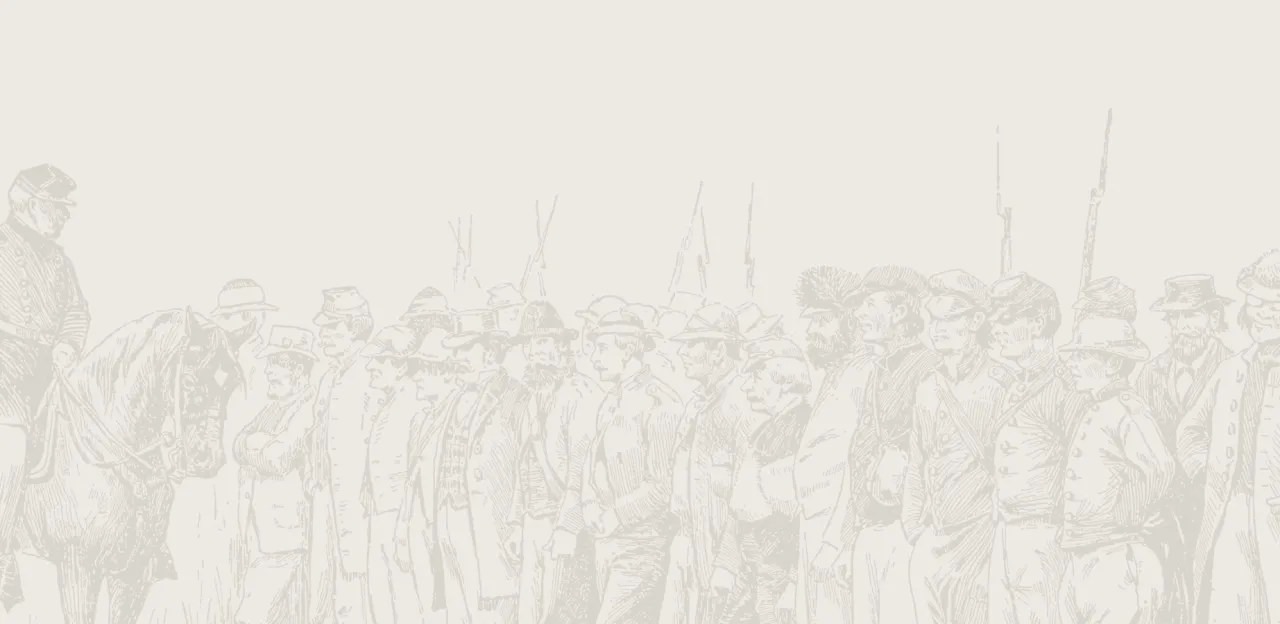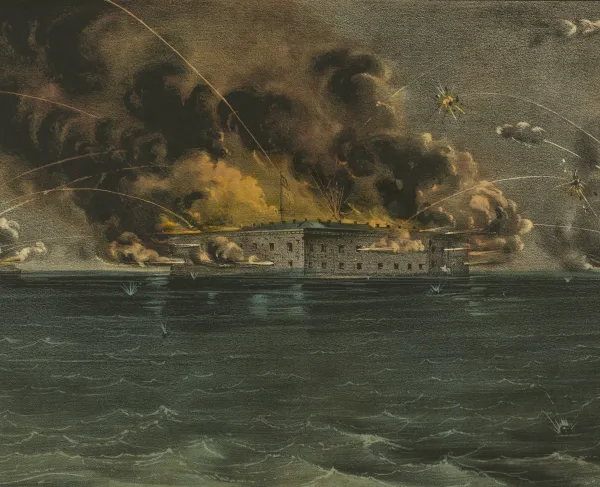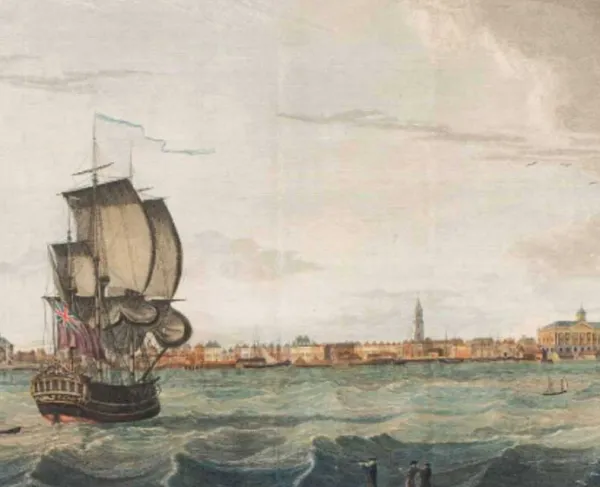Brother Against Brother at Secessionville

William J. Hamilton, III
Excerpted from a longer and more detailed article by J. Tracey Power, "Brother Against Brother: Alexander and James Campbells's Civil War," South Carolina Historical Magazine, 95:2 (April 1994)
Two brothers, born in Scotland and building new lives in America found themselves fighting each other for their adoptive countries at Secessionville in 1862.
They immigrated to America in the 1850's. Confederate James Campbell settled in Charleston where he worked as a drayman and clerk, joining a militia company known as the Union Light Infantry, sometimes called 42nd. Highlanders (probably after the 42nd British Black Watch Regiment because of its predominately Scottish ethnicity). His brother Alexander settled in New York, but spent time in Charleston working as a stone mason on the new U.S. Customs House being built at the end of Market Street shortly before the war. While in Charleston he also enlisted in a militia company later identified in letters from his brother as "the H.G.s" which was probably the Home Guards, composed of foreign born residents of Charleston. In March 1862, James and the Union Infantry were consolidated into the Charleston Battalion. In New York, Alexander joined the 79th Highlander regiment.
As preparations for war were made on both sides, the brother's corresponded. Alex's unit was transferred to Charleston and occupied parts of James Island in early June 1862, placing him in sight of the city where he and his brother had once lived and that's conquest he had sworn to help obtain. Federal Alex learned of his Confederate brother's service in the vicinity of Secessionville from Henry Walker, a prisoner captured in a skirmish on June 3, 1862. He relayed the information home in a letter to his wife on June 10. "We are not far from each other now . . . this was a war that there never was the like of before Brother against Brother."
Neither knowing at the time, they fought each other at Secessionville. At the peak of the first, and most successful attack against Ft. Lamar, Alexander, now a Color Sergeant in the 79th planted the United States Flag before the parapet of Ft. Lamar and kept it there in the face of massed musketry and canon until ordered to withdraw. In the midst of the fighting, when Confederate resistance began to buckle, James, now a Lieutenant in the Confederate army, mounted the parapet unarmed, rolled a log down into the mass of advancing federal troops, seized a Federal musket and continued fighting. The Charleston Mercury reported, "The foe, it is true, displayed admirable courage, the famous Highland regiment, the 79th New York, occupied the prominent place in the picture, but their desperate onslaughts were of no avail against the stubborn resolve and lofty valor of our brave boys."
The Charleston Courier editorialized on the two brothers, "another illustration of the deplorable consequences of this fratricidal war." It stated Alexander Campbell, "fought gallantly in the late action" and "displayed ... a heroism worthy of his regiment and a better cause" while James Campbell "was conspicuous and has been honorable mentioned on our side."
Afterwards Confederate James wrote his Federal Brother, "I was astonished to hear from the prisoners that you was color Bearer of the Regmt that assaulted the Battery at this point the other day." James continued, "I was in the Brest work during the whole engagement doing my Best to Beat you(.) but I hope you and I will never again meet face to face bitter enemies on the Battlefield(.) but if such should be the case You have but to discharge your duty for your cause for I can assure you I will strive to discharge my duty to my country and my cause." The letter from brother to brother was carried across the bloody fields of James Island under flag of truce. Shortly after the battle, Confederate James tried to visit his federal brother by going to the Union lines and asking if the 79th. N.Y. was on picket duty. They went and the officer in charge of the Federal troops would not allow James to cross the lines and search for his brother nor would he send for Alex so he could be brought out for a meeting.
Alexander wrote his wife in New York, sending along a copy of James' letter, "it is rather bad to think that we should be fighting him on the one side and me on the other for he says he was in the fort during the whole engagement(.) I hope to god that he and I will get safe through it all and he will have his story to tell about his side and I will have my story to tell about my side."
After Secessionville the war continued for these two brothers. Alexander went with his regiment to be wounded in the foot carrying the U.S. colors in the aftermath of the Federal defeat at 2nd. Manassas (2nd. Bull Run) He was one of five Highlander color bearers wounded during that Battle. At that battle General Isaac I. Stevens took the flag from one of the color Sergeants to rally his men, crying, "Give me the colors! If they don't follow now, they never will!" The General charged forward a few feet and was killed by a shot though the head. It is unknown if Alex Campbell was present at this incident, or had already been wounded.
Alexander never fully recovered from his wound, was promoted to 2nd. Lieutenant and eventually resigned his commission and left the Federal army in May 1863.
James continued to fight for the Confederacy, helping to defend Charleston. In the famous attack on Battery Wagner by the 54th Massachusetts and other federal units on July 18, 1863, James was in the fort, having endured a terrible artillery barrage. The Federals overran part of the fort. James volunteered to investigate. He jumped atop the dark parapet in the night, demanded the troops identify themselves and was attacked by two federal soldiers who lunged at him with their bayonets. He pushed them from the parapet. They fell on their own bayonets and James ordered the other Federals there to surrender. They grabbed him by the leg and dragged him into the ditch below. When they withdrew from the fort, they took James as one of their five prisoners. Newspapers reported, "the oath of allegiance was tendered (Campbell) at Hilton Head, but rejected with the utmost scorn and contempt." While a prisoner, he was promoted to 1st. Lieutenant. While a prisoner, he corresponded with his brother Alexander. He was eventually freed on June 12, 1865 and returned home to Charleston.
After the war James managed a Plantation and eventually bought land on the Ashepoo River South of Charleston. he was active in Charleston's St. Andrews Society and the United Confederate Veterans. Alexander moved to Connecticut and established a business manufacturing "artistic monuments." They corresponded with each other and were on good terms after the war. James died in 1907 and Alexander died in 1909.


